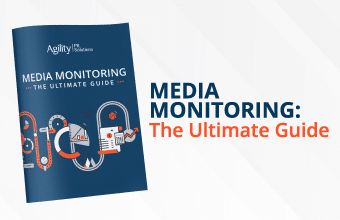Have you ever looked at your monitoring results and thought: Why is this publication here? It doesn’t even cater to my target audience.
You’re not alone.
Many times when we onboard a client, they find that they get too much “noise”, or unwanted coverage, from outside the regions in which they operate. That’s why defining a geographic area is extremely useful when monitoring and gathering media from various sources.
Our advice to them is to review where exactly they operate, look at their industry, and focus on where coverage for those topics usually comes from. We then take this information and adjust the searches accordingly. Often clients will monitor in different regions depending on where their company and competitors operate, as well as what their industry is.
Below are four ways that you can increase the relevancy of your media results through geographic monitoring:
Specify sources
Many media monitoring subscription services offer the ability to monitor for coverage from specific regions. What this does is cut down on the mass amounts of news that come in from locations that simply don’t matter to the client. Sources usually offer the ability to monitor per country, and some even allow you to narrow down further and only monitor states or provinces, or even cities. Many also offer the ability to customize by allowing you to build your own regional groups by arranging states, provinces, or cities together however they might make the most sense for the client.
Specifying your regions when you are monitoring is especially helpful when you monitor for online coverage. Online coverage can be vast in the amount of coverage that keywords pull in, so specifying your regions can really help to cut down on the noise.
Pick publications
Often our clients already know the publications from a geographic region that are important to them—they even know the journalists who write for these publications. These are the sources that Agility PR Solutions’ dedicated analysts typically review with a fine-toothed comb.
Some clients who are new to media monitoring aren’t sure where to start when it comes to geographic monitoring. Often we begin by casting a wide net, and work with them to cut down on the noise. Similar to the way we would work with setting up keywords, we review the publications which are being monitored and make suggestions and adjustments based on the search results and the usefulness of the content.
Keeping in mind that online publications can be read by people outside of the monitored region, geographic monitoring is more efficient when monitoring for traditional media, ie. television, radio, and print. This doesn’t mean that the online versions of regional publications should be omitted, just that it is something that our clients need to be aware of when fine tuning their media analysis.
Keywords are also a great asset when setting up regional monitoring, as sometimes specifying regional libraries is just not enough. Using a spreadsheet or some other documentation to help record your keywords and regions is a great way to help identify new monitoring criteria and to help create search strings specific to a region. Spreadsheets are a great way to look at and compare search strings and regional searches at the same time. Often when you monitor a variety of sources, search strings are all over the place, and keywords or publications can be easily missed. A spreadsheet can help keep everything organized and collected in one central location.
Consult previous coverage
An advantage to Agility Enterprise platform is the ability to gain insight into where coverage is coming from. Agility PR Solutions’ platform lets clients set up customized regions so that when reporting time comes around, they can see exactly what regions are delivering the information that matters to them.
Regional reporting also lets users get as granular as reporting on regional tone. By toning all of the articles in their database, clients can get a report on which geographic area presents positive, neutral, or negative coverage. This helps clients to understand how the media is representing their topics in that region.
Going even further than toning, we use the regional analysis to see how messages in the media differ between regions. Two regions, which may differ culturally, can present a company’s message differently. Being able to analyze the regions equips the client with knowledge on how to present their messages to the respective regions.
Regional monitoring and reporting also allow users to gain insight into which publications were monitored the most over a period of time. This gives our clients valuable information that they, in turn, can use to reach out to journalists and outlets when pitching stories or setting up media events.
On the flip side, knowing which regions consistently produce lower coverage also allows the client to cut down on redundant searches and focus monitoring on the relevant regions.
Get a handle on Geo-locating/Geo-tagging (Social Media)
Using geographic monitoring for social media isn’t as easy as it is for traditional media monitoring. For social media monitoring, many platforms rely on the user to have activated the geolocation in their user profiles. Due to privacy reasons, users don’t always turn this feature on or platforms do not make this information public.
Facebook has made it increasingly difficult to monitor its users; however, public pages are usually available to be captured. Here you can pick and choose the pages or groups that would most help your monitoring, especially when those pages are located in the areas that are important to you. Some common pages we always recommend tracking are news outlets in the regions where our clients monitor. This way we can capture the traditional news, as well as what is being posted locally. It gives clients valuable insight into what is being shared socially by the media outlets.
Twitter users can usually be narrowed down by a region, but again, if the user has declined to disclose their location, you may be monitoring and collecting tweets from outside your geographic area of interest. To get around this, we always suggest using keywords to help capture geographic content. Using generic regional terms can help, as well as keywords associated with reports, spokespeople, and, of course, the mighty hashtag.
Want to find out more about geographic monitoring? Contact one of our experts today and find out how you can simplify the communications lifecycle.










